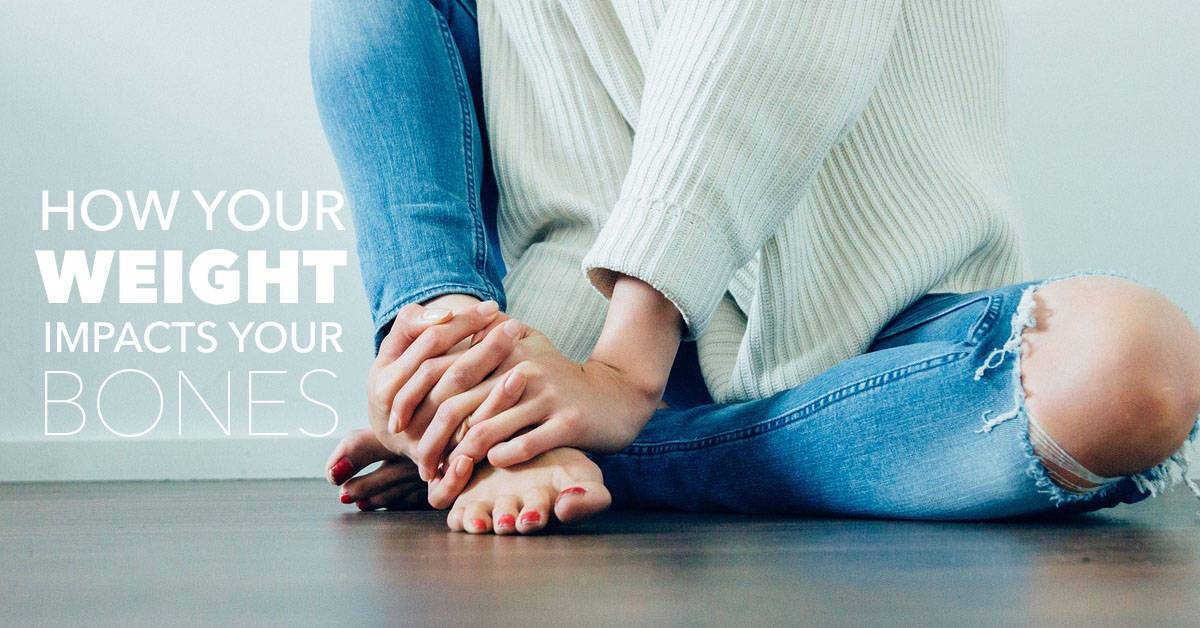How Your Weight Impacts Your Bones

Face it: ‘big bones’ may run in your family, but it’s still not enough of an excuse to let yourself go and stop watching your serving sizes and total daily calorie intake. Did you ever wonder how your weight impacts your bones? Apart from aesthetic aspects, excess weight can compromise your long-term well being, increase the risk of type 2 diabetes, cardiovascular problems, and heart disease, and even chip off chunks of your bone health. And more importantly, weight impacts bones, bone health, and growth patterns. But do you know how exactly weight impacts bones, and what can you do to prevent lasting weight-related damage to the skeletal structure?
The impact of excess weight on bone health
Here is a quick look at the common skeletal structure problems that trace back to one too many pounds:
1. Growth plate damage
Childhood and adolescent obesity is the prime cause of growth plate damage. The growth plate is the part of the bone that determines its length and shape in adult years, and it can sustain extensive damage if exposed to high weight-related stress in the formative years. Unless diagnosed and treated adequately, damaged growth plates can increase the risk of arthritis and fractures later in life.
2. Chronic joint pains
Obese and overweight people often experience hip, knee, and other joint pains after prolonged periods of standing or walking. Weight-related joint pains can become chronic because cartilage cushions wear faster1 if constantly exposed to high stress, which can lead to joint swelling, stiffness, tendon inflammation and soreness, reduced mobility, and even arthritis.
3. Bone deformation
The fact that you have a few more pounds than is considered normal for your age and build doesn’t mean that your bones are strong and hard. On the contrary, obese and overweight people often suffer from low bone mineral density, which is a prime cause of bone deformities such as Blount’s disease.2 Sadly, treatments for deformed bones can be long-winded and don’t always promise full recovery.
4. Painful fractures
Studies show2 that age-related bone density dips and excess weight increase the risk of osteoporosis and consequent bone brittleness and painful late-life fractures. Since a single pound of excess weight means four pounds of added pressure on the knees, the risk of osteoporotic fractures will be significantly higher for elderly people (especially women) with a higher than optimal body mass index.
Prevent bone problems before it’s too late
Preventing bone damage caused by extra weight is easier and more efficient than treating a full-blown skeletal structure issue once it solidifies. If you want to keep your bone health in check in the years to come, here are a few things you can do right away to do your musculoskeletal system a huge favor:
1. Tweak your menu for gradual weight loss
If you have a bit more weight than is good for your bones, you should make dietary changes as soon as possible to prevent bone degradation and a host of other health issues in the future. Start counting calories and tweak your nutrient ratios to hack sustainable yet efficient weight loss. Once the fat stock begins to melt, devise a balanced diet conducive to long-term weight maintenance.
2. Workout consistency for healthy bones
A sedentary lifestyle is an aggravating factor for weight problems, but its impact on bone health can be slashed granted workout consistency and carefully designed training regime. Weight-bearing exercises are ideal to increase your bone density, and there are numerous workouts out there that can help you banish fat while at the same time boosting your overall fitness and health.
3. Keep a weight loss journal to track progress
Keep track of your weight loss regime with the help of a journal: this will help you stay on top of fat burn dynamics and make changes en route to a slender body in line with your individual goals. You can download an easy-to-use body measurement app and monitor your results accurately in line with the workout type and training goals. These apps will track your progress and remind you of your workout routines, which will help you stick to your healthy habits.
4. Increase vitamin and mineral intake
Calcium is the essential mineral that strong bones are made of, so stock up your plate with foods rich in the micronutrient if you want your skeletal structure to stay out of harm’s way for a few years longer. Mind your Vitamin D and magnesium intake as well, as these two micronutrients play a role in calcium absorption, which is why you should strive to meet daily recommended daily allowances for magnesium and Vitamin D, not just calcium.
Extra weight is not just an aesthetic problem. It’s a serious threat to your long-term bone health, and as such should not be taken lightly. Don’t let neglect and lack of discipline compromise your mobility later in life – you can and should prevent weight-related bone conditions before it gets too late to reverse or remedy them.
References
- https://www2.rsna.org/timssnet/media/pressreleases/PDF/pressreleasePDF.cfm?ID=419
- http://www.ncbi.nlm.nih.gov/pubmed/21102216
- http://www.ncbi.nlm.nih.gov/pmc/articles/PMC4064448/









